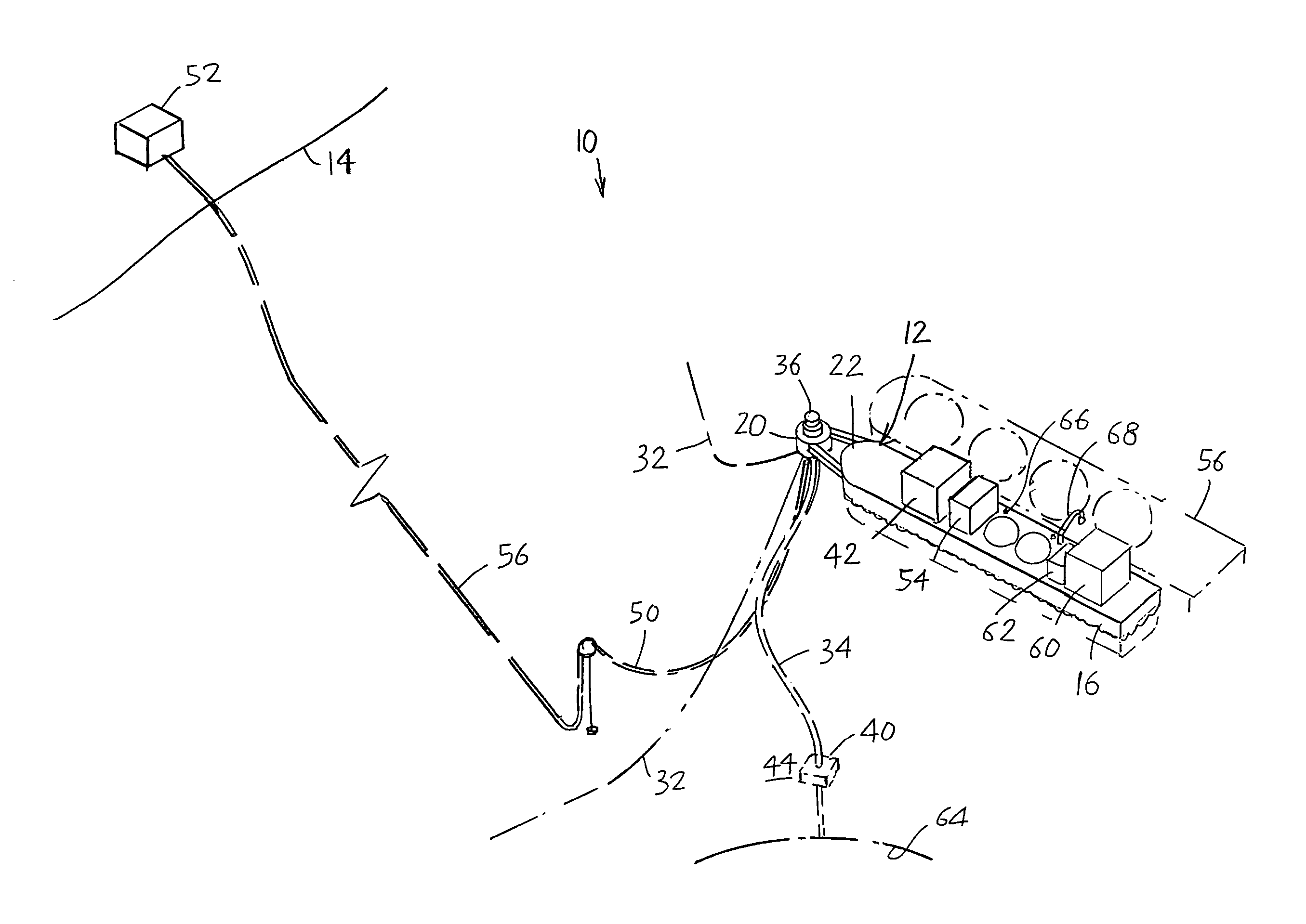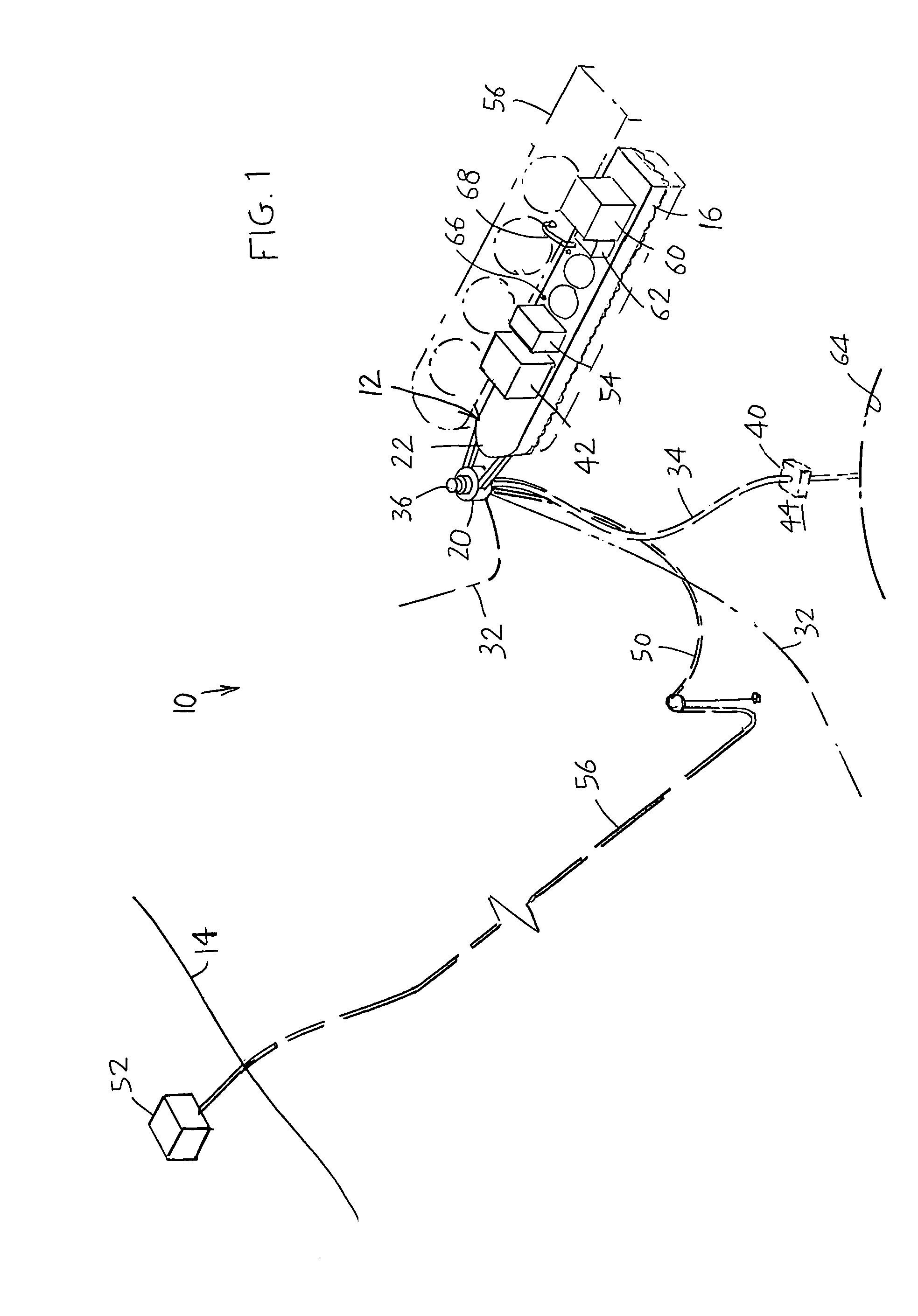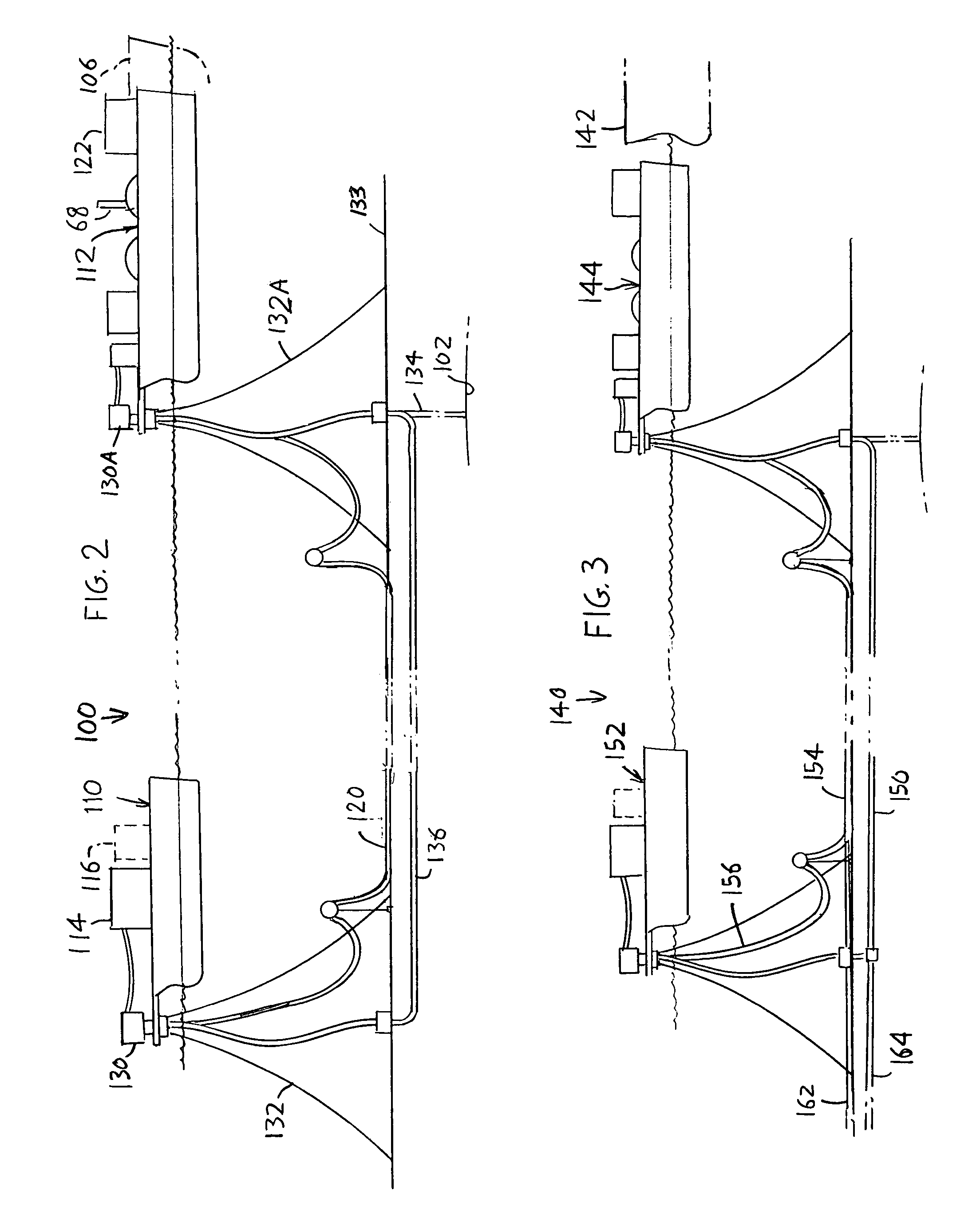Floating power generation system
a power generation system and floating technology, applied in special-purpose vessels, container discharging methods, lighting and heating apparatus, etc., can solve the problems of large-scale natural gas storage dangers, explosions or fires, and achieve the effect of more rapid acquisition of vessels
- Summary
- Abstract
- Description
- Claims
- Application Information
AI Technical Summary
Benefits of technology
Problems solved by technology
Method used
Image
Examples
Embodiment Construction
[0009]FIG. 1 illustrates a system 10 for generating large amounts of electricity (at least 30 megawatts), using natural gas as a fuel, which includes a vessel 12 that lies offshore (usually less than about 200 kilometers from shore 14). The vessel, such as a barge, has a hull 16 that supports a turret 20 at its bow end 22. The turret is moored by a mooring system such as catenary lines 32 that extend to the sea floor and along it. Risers 34 extend from a swivel 36 on the turret to a sea floor platform 40. The turret allows the vessel to weathervane, that is, to face in different directions with changing winds and waves, while the catenary lines allow the vessel to drift but only a limited distance, from a location 44 over the sea floor platform. Other mooring systems that can be used instead, including spread mooring.
[0010]The vessel carries an electricity generating unit 42 that uses gas as a fuel to generate electricity. A preferred unit is a turbine-generator set wherein the turb...
PUM
 Login to View More
Login to View More Abstract
Description
Claims
Application Information
 Login to View More
Login to View More - R&D
- Intellectual Property
- Life Sciences
- Materials
- Tech Scout
- Unparalleled Data Quality
- Higher Quality Content
- 60% Fewer Hallucinations
Browse by: Latest US Patents, China's latest patents, Technical Efficacy Thesaurus, Application Domain, Technology Topic, Popular Technical Reports.
© 2025 PatSnap. All rights reserved.Legal|Privacy policy|Modern Slavery Act Transparency Statement|Sitemap|About US| Contact US: help@patsnap.com



